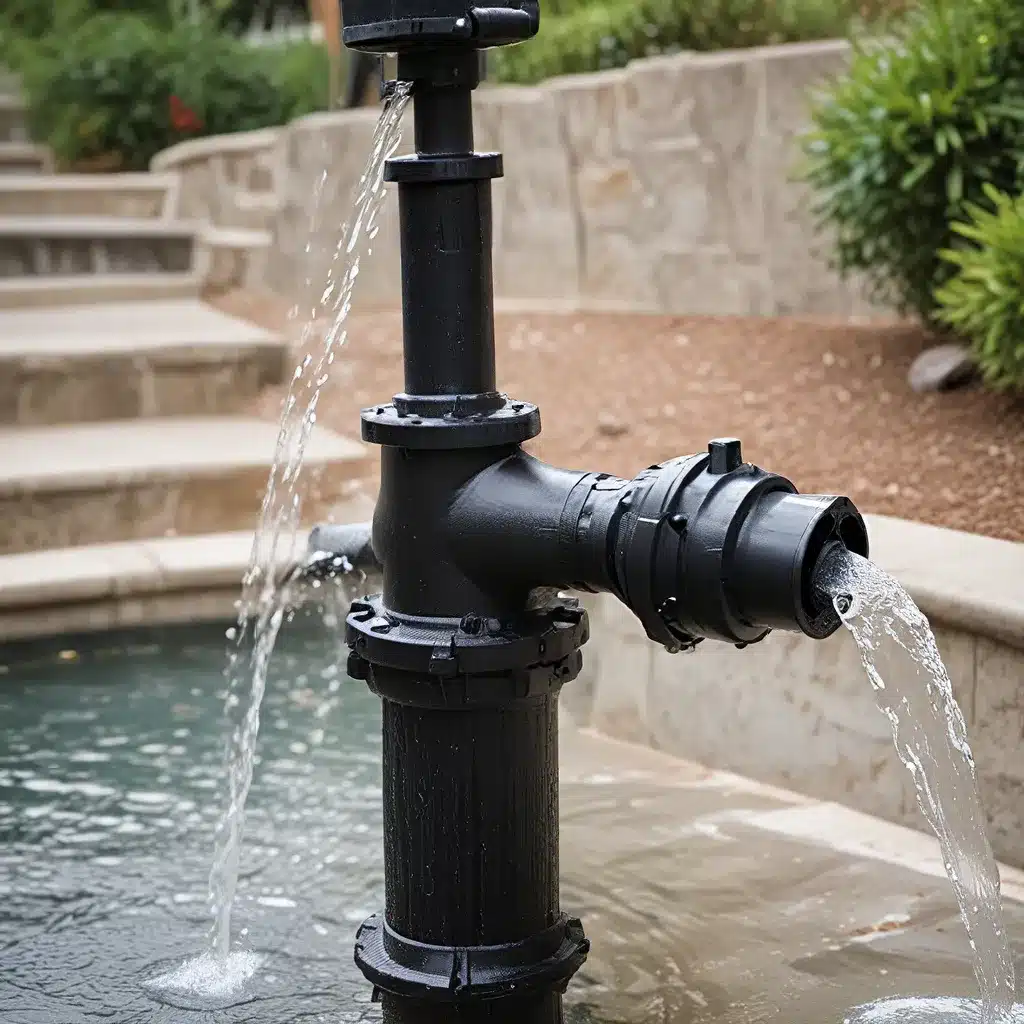
Fountain Design Essentials – Welcome to Fountain Lights
Fountain Design Essentials – Welcome to Fountain Lights

As a fountain enthusiast, I’ve always been fascinated by the captivating dance of water and light. But let’s be honest, managing a fountain’s pump can sometimes feel like a game of cat and mouse. Just when you think you’ve got the perfect flow and sparkle, something seems to go awry.
Well, fear not, my friends! Today, I’m here to share a Fountain Pump Playbook that will help you maximize the performance of your pump and keep your fountain in tip-top shape. Whether you’re a seasoned pro or a fountain newbie, these strategies will have you feeling like a true fountain wizard in no time.
Before we dive into the nitty-gritty of pump optimization, it’s essential to have a solid understanding of your pump’s inner workings. Fountain pumps are the heart and soul of any water feature, responsible for circulating the water and creating that mesmerizing display.
Did you know that the pump’s impeller is the key component that drives the water flow? This spinning component is what creates the suction and pressure that push the water through the system. The size and design of the impeller can greatly impact the pump’s overall performance.
Another crucial element is the motor. Depending on the type of pump, it may be a submersible or external motor. The motor’s power and efficiency directly influence the pump’s ability to handle the water flow and height requirements of your fountain.
Understanding these fundamental components will help you make informed decisions when it comes to maintaining, troubleshooting, or even upgrading your pump. Armed with this knowledge, let’s dive into some strategies to keep your fountain pump running at its best.
One of the most overlooked aspects of fountain pump performance is regular maintenance. Just like any other mechanical equipment, your pump requires periodic attention to ensure it continues to operate at peak efficiency.
Cleaning the Impeller: Over time, debris and mineral buildup can accumulate on the impeller, reducing its ability to move water effectively. Make it a habit to regularly clean the impeller by removing it and giving it a thorough scrubbing. This simple task can work wonders in restoring your pump’s performance.
Filter Maintenance: Don’t forget about the importance of keeping your fountain’s filtration system in top shape. Clogged or dirty filters can restrict water flow and cause the pump to work harder than necessary. Set a schedule to check and clean your filters regularly, ensuring they’re free of debris.
Lubrication: Depending on the type of pump, some components may require periodic lubrication to maintain smooth operation. Consult your pump’s manufacturer’s instructions to determine if and when lubrication is necessary.
Periodic Inspections: Make it a point to visually inspect your pump and its surrounding components on a regular basis. Look for any signs of wear, corrosion, or damage that may require attention. Catching issues early can prevent more significant problems down the line.
By establishing a consistent maintenance routine, you’ll be well on your way to maximizing the lifespan and performance of your fountain pump.
The location and plumbing of your fountain pump can have a profound impact on its efficiency. Let’s explore some strategies to ensure your pump is positioned and connected for optimal performance.
Pump Placement: Ideally, you want to place your fountain pump as close to the water source as possible. This reduces the suction lift and minimizes the distance the pump needs to push the water, resulting in a more efficient operation. Avoid placing the pump too far away from the fountain or at a significantly higher elevation, as this can overwork the pump and reduce its output.
Plumbing Considerations: When it comes to the plumbing, make sure to use the appropriate pipe size and fittings for your pump. Undersized or restrictive piping can create unnecessary backpressure, forcing the pump to work harder than necessary. Consult the manufacturer’s recommendations or a professional to determine the optimal pipe size and configuration for your setup.
Reduce Turbulence: Sharp bends, elbows, and other plumbing components can introduce turbulence into the water flow, reducing the pump’s efficiency. If possible, minimize the number of elbows and opt for gentle, sweeping curves in your plumbing design.
Proper Drainage: Don’t forget about the importance of proper drainage for your fountain. Ensure that the water can easily flow back to the pump’s intake, as any blockages or obstructions can lead to issues like cavitation, which can damage the pump.
By carefully considering the placement and plumbing of your fountain pump, you’ll be well on your way to achieving optimal performance and prolonging the life of your equipment.
In today’s era of environmental consciousness, energy efficiency has become a top priority for many fountain enthusiasts. Fortunately, there are some pump upgrade options that can help you reduce your energy consumption without sacrificing performance.
Variable-Speed Pumps: Traditional single-speed pumps often operate at a fixed, high-power setting, even when the fountain doesn’t require maximum output. Variable-speed pumps, on the other hand, allow you to adjust the flow rate and energy consumption based on your fountain’s needs. By running the pump at lower speeds when possible, you can achieve significant energy savings.
Energy-Efficient Motor Designs: Advancements in motor technology have led to the development of high-efficiency pump motors that consume less energy while maintaining the necessary power and flow. These motors often utilize brushless DC (BLDC) or permanent magnet synchronous motor (PMSM) designs, which can provide a substantial energy-saving advantage over older induction motor technologies.
Solar-Powered Pumps: For a truly eco-friendly solution, you can explore the integration of solar power into your fountain system. Solar-powered fountain pumps harness the sun’s energy to operate, eliminating the need for grid-supplied electricity. This not only reduces your carbon footprint but also provides a sustainable, off-the-grid solution for your fountain.
By embracing these energy-efficient pump upgrades, you can not only save on your energy bills but also contribute to a more sustainable future for your fountain and the environment.
No matter how well you maintain your fountain pump, occasional issues may arise. Being able to identify and address these problems can go a long way in ensuring your fountain continues to operate smoothly.
Low Water Flow: If you notice a decrease in water flow from your fountain, there could be several possible causes. Check for any obstructions or debris in the pump’s inlet, impeller, or plumbing. Ensure the pump is properly sized for your fountain’s requirements and that the voltage supply is adequate.
Noisy Operation: A noisy or rattling pump could indicate a problem with the impeller, bearings, or other internal components. Inspect the pump for any signs of wear or damage and consider replacing the affected parts if necessary.
Overheating: If your pump is running hot or shutting off due to thermal overload, it could be a sign of inadequate cooling or ventilation. Make sure the pump is not submerged in water or surrounded by obstructions that prevent proper airflow. In some cases, upgrading to a more efficient motor or adding a cooling fan may be necessary.
Reduced Pressure: Sudden drops in water pressure can be caused by issues like clogged filters, worn impellers, or plumbing restrictions. Carefully examine the entire system and make any necessary adjustments or replacements to restore the desired pressure.
By staying vigilant and addressing these common pump problems promptly, you can ensure your fountain continues to operate at its best, delivering the captivating water displays you love.
Now that you’ve armed yourself with the knowledge and strategies in this Fountain Pump Playbook, it’s time to put them into action. Remember, your fountain pump is the backbone of your water feature, and by optimizing its performance, you’ll be able to unlock the full potential of your fountain.
Whether you’re fine-tuning your maintenance routine, upgrading to energy-efficient components, or troubleshooting pesky issues, the key is to approach your fountain pump with a proactive and informed mindset. By doing so, you’ll not only extend the lifespan of your equipment but also enjoy a more visually stunning and efficient water feature.
As you embark on this fountain pump optimization journey, I encourage you to explore the resources available at FountainLights.net. There, you’ll find a wealth of information, expert advice, and even potential products to help you take your fountain to new heights.
Remember, the secret to a truly captivating fountain isn’t just in the water and lights – it’s in the heart that keeps it all flowing. So, let’s dive in and unlock the true potential of your fountain pump, one step at a time.
Share to :
Subscribe to our newsletter for the latest in fountain design, innovative lighting ideas, and exclusive tips straight to your inbox. Join the community shaping the future of water features.

Rapid delivery to your doorstep.

Excellence in every product.

Great value for your investment.

Assistance at any hour.
Fountain Lights — Illuminating creativity in every splash!
Copyright © 2023. All Right Reserved